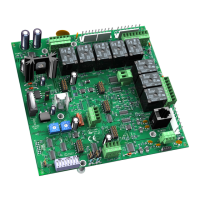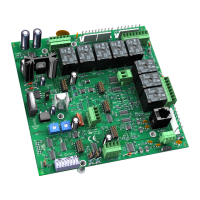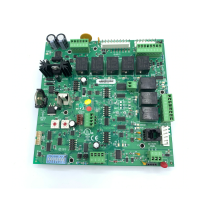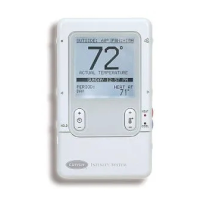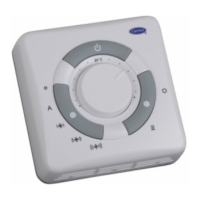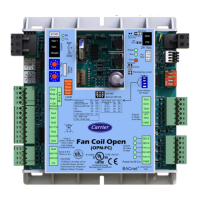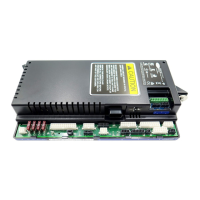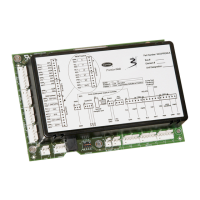Do you have a question about the Carrier i-Vu Open Link and is the answer not in the manual?
Defines the i-Vu® Open Link as a BACnet device router and gateway for networks, supporting multiple protocols.
Instructions and safety precautions for physically installing the i-Vu® Open Link into an enclosure.
Details procedures and warnings for connecting the i-Vu® Open Link to a power source.
Covers setting Open network addresses and IP addresses for the i-Vu® Open Link.
Guides on using rotary switches to set the controller's address for the Open network.
Discusses planning IP addressing, covering DHCP vs. custom assignment for network configuration.
Step-by-step guide for acquiring an IP address automatically via a DHCP server.
Instructions for manually assigning a static IP address, subnet mask, and gateway.
Details using PuTTY terminal for router configuration and serial communication.
Explains local communication with the i-Vu® Open Link using a USB Link cable.
Details connecting the laptop to the controller using a USB Link cable.
Provides steps for connecting and using PuTTY for device configuration and property retrieval.
Covers specifications for Ethernet, MS/TP, and ARC156 network cabling requirements.
Instructions for connecting the i-Vu® Open Link to an Ethernet network via Port E1.
Guides on connecting the i-Vu® Open Link to a BACnet MS/TP network via Port S1.
Details how to connect the i-Vu® Open Link to a BACnet ARC156 network.
Instructions for connecting third-party Modbus or LonWorks devices via Port S2.
Explains how rotary addresses influence automatic BACnet addressing for the network.
Steps to modify and apply BACnet settings for the router and connected controllers.
Guides on configuring BBMDs for efficient BACnet broadcast handling across subnets.
Customizing driver properties like backup battery, module clock, and communication.
Configuring BACnet device object properties and network communication parameters.
Setting up alarm priorities, acknowledgments, and recipients for notifications.
Information on using Calendars for BACnet compatibility and Schedules feature.
Enabling, disabling, and configuring properties for various system alarms.
Adjusting BACnet routing and caching settings for network performance.
Steps to enable and configure the BACnet firewall for enhanced security.
Configuring settings for storing and forwarding alarms from remote sites.
Interpreting module status LED error codes and their possible solutions.
Locating the i-Vu® Open Link's serial number for identification and support.
Procedures for resetting the controller to its original factory settings.
Steps to disable communication with the i-Vu® Open Link for maintenance.
Instructions for safely replacing the i-Vu® Open Link's internal backup battery.
FCC regulations and warnings for operating the digital device.
CE marking and domestic use warnings for potential radio interference.
Statement on compliance with ASHRAE Standard 135 for BACnet.
Defines the i-Vu® Open Link as a BACnet device router and gateway for networks, supporting multiple protocols.
Instructions and safety precautions for physically installing the i-Vu® Open Link into an enclosure.
Details procedures and warnings for connecting the i-Vu® Open Link to a power source.
Covers setting Open network addresses and IP addresses for the i-Vu® Open Link.
Guides on using rotary switches to set the controller's address for the Open network.
Discusses planning IP addressing, covering DHCP vs. custom assignment for network configuration.
Step-by-step guide for acquiring an IP address automatically via a DHCP server.
Instructions for manually assigning a static IP address, subnet mask, and gateway.
Details using PuTTY terminal for router configuration and serial communication.
Explains local communication with the i-Vu® Open Link using a USB Link cable.
Details connecting the laptop to the controller using a USB Link cable.
Provides steps for connecting and using PuTTY for device configuration and property retrieval.
Covers specifications for Ethernet, MS/TP, and ARC156 network cabling requirements.
Instructions for connecting the i-Vu® Open Link to an Ethernet network via Port E1.
Guides on connecting the i-Vu® Open Link to a BACnet MS/TP network via Port S1.
Details how to connect the i-Vu® Open Link to a BACnet ARC156 network.
Instructions for connecting third-party Modbus or LonWorks devices via Port S2.
Explains how rotary addresses influence automatic BACnet addressing for the network.
Steps to modify and apply BACnet settings for the router and connected controllers.
Guides on configuring BBMDs for efficient BACnet broadcast handling across subnets.
Customizing driver properties like backup battery, module clock, and communication.
Configuring BACnet device object properties and network communication parameters.
Setting up alarm priorities, acknowledgments, and recipients for notifications.
Information on using Calendars for BACnet compatibility and Schedules feature.
Enabling, disabling, and configuring properties for various system alarms.
Adjusting BACnet routing and caching settings for network performance.
Steps to enable and configure the BACnet firewall for enhanced security.
Configuring settings for storing and forwarding alarms from remote sites.
Interpreting module status LED error codes and their possible solutions.
Locating the i-Vu® Open Link's serial number for identification and support.
Procedures for resetting the controller to its original factory settings.
Steps to disable communication with the i-Vu® Open Link for maintenance.
Instructions for safely replacing the i-Vu® Open Link's internal backup battery.
FCC regulations and warnings for operating the digital device.
CE marking and domestic use warnings for potential radio interference.
Statement on compliance with ASHRAE Standard 135 for BACnet.
| Connectivity | Ethernet, MS/TP |
|---|---|
| User Interface | Web-based |
| Communication Protocol | BACnet/IP, BACnet MS/TP |
| BTL Listing | Yes |
| Web Server | Embedded |
| Ethernet Ports | 1 |
| MS/TP Ports | 1 |
| Type | Controller |
| Compatibility | BACnet |
| Power Supply | 24VAC |
| Functionality | Monitoring, control, scheduling, alarms |
